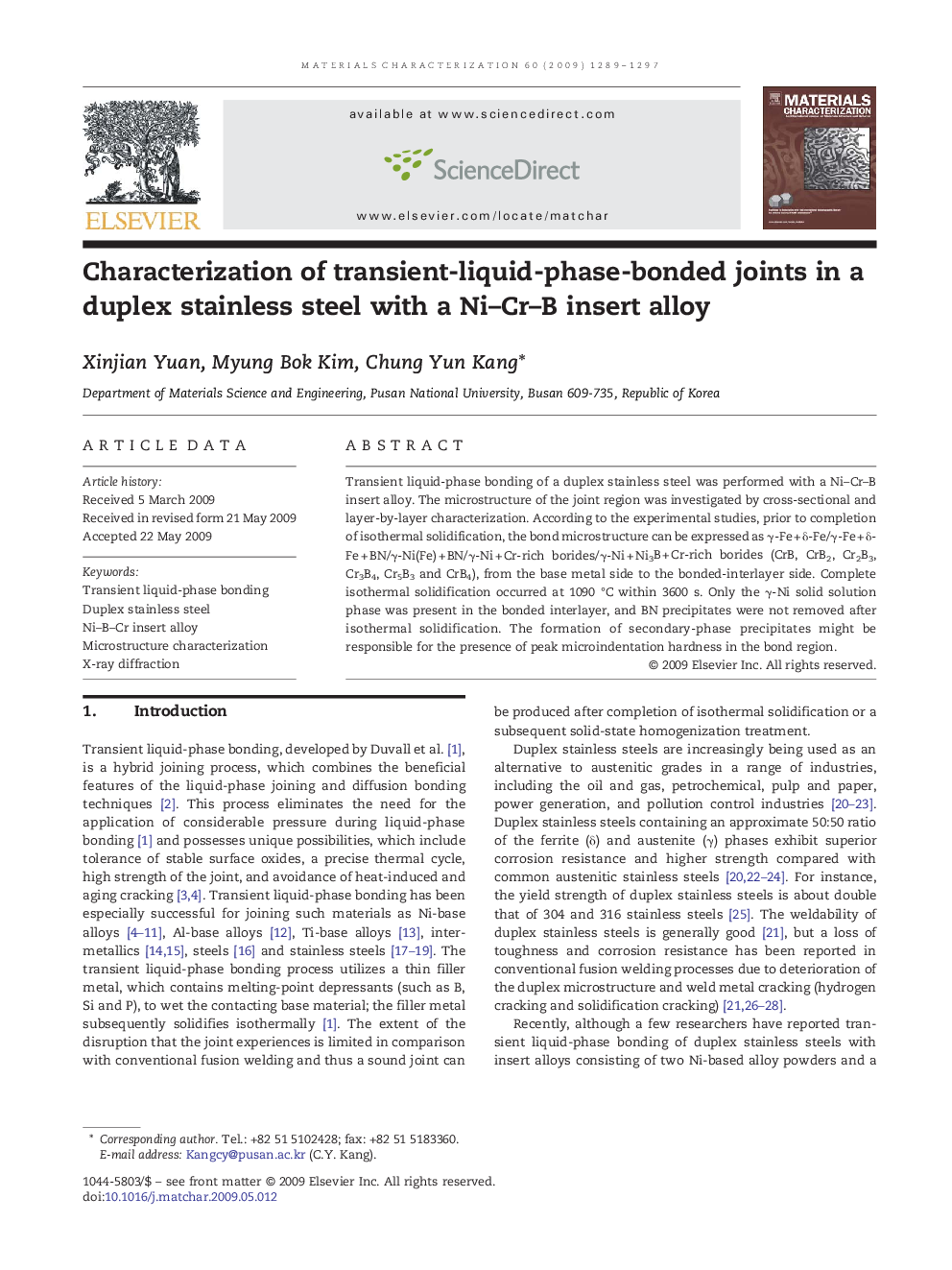| Article ID | Journal | Published Year | Pages | File Type |
|---|---|---|---|---|
| 1571828 | Materials Characterization | 2009 | 9 Pages |
Transient liquid-phase bonding of a duplex stainless steel was performed with a Ni–Cr–B insert alloy. The microstructure of the joint region was investigated by cross-sectional and layer-by-layer characterization. According to the experimental studies, prior to completion of isothermal solidification, the bond microstructure can be expressed as γ-Fe + δ-Fe/γ-Fe + δ-Fe + BN/γ-Ni(Fe) + BN/γ-Ni + Cr-rich borides/γ-Ni + Ni3B + Cr-rich borides (CrB, CrB2, Cr2B3, Cr3B4, Cr5B3 and CrB4), from the base metal side to the bonded-interlayer side. Complete isothermal solidification occurred at 1090 °C within 3600 s. Only the γ-Ni solid solution phase was present in the bonded interlayer, and BN precipitates were not removed after isothermal solidification. The formation of secondary-phase precipitates might be responsible for the presence of peak microindentation hardness in the bond region.
